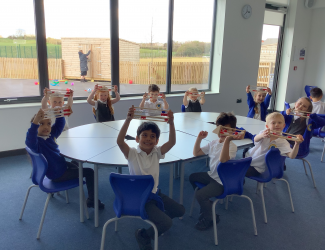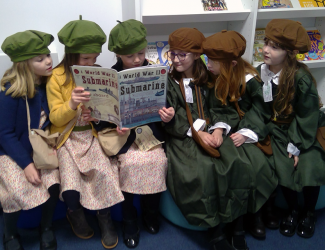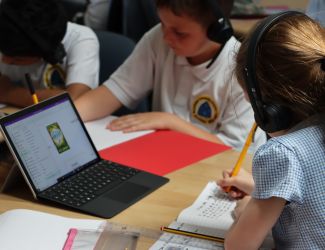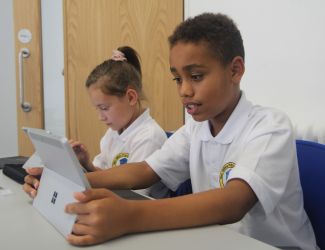Year 5 Music Curriculum
Children will be taught six key strands of musical knowledge which include: singing, listening, improvising, composing, performing and reading notation. Pupils will be encouraged to explore the musical concepts through learning to play the recorder. They will be taught…
Singing
- Sing a broad range of songs from an extended repertoire with a sense of ensemble and performance. This should include observing phrasing, accurate pitching and appropriate style.
- Sing three-part rounds, partner songs, and songs with a verse and a chorus.
- Perform a range of songs in school assemblies and in school performance opportunities.
Listening
The following styles of music will be introduced as well as recapping on styles that have been taught in previous years.
Western Classical Tradition and Film:
- 20th Century- Vaughan Williams
- 20th Century – Coleridge-Taylor
- 20th Century- Britten
Popular Music:
- 90s Singer/Songwriter- Björk
- 80s Synth/Popi- Bronski Beat
Musical Traditions:
- Nigeria- Drumming- Babatunde Olatunji
- South Africa- Choral- Ladysmith Black Mambazo
Improvise
- Improvise freely over a drone, developing sense of shape and character, using tuned percussion and melodic instruments.
- Improvise over a simple groove, responding to the beat, creating a satisfying melodic shape; experiment with using a wider range of dynamics, including very loud (fortissimo), very quiet (pianissimo), moderately loud (mezzo forte), and moderately quiet (mezzo piano).
Compose
- Compose melodies made from pairs of phrases in either C major or A minor or a key suitable for Recorders/Toots.
- Working in pairs, compose a short ternary piece.
- Use chords to compose music to evoke a specific atmosphere, mood or environment.
- Capture and record creative ideas using any of: graphic symbols, rhythm notation and time signatures, staff notation and technology.
Performing
- Play melodies on tuned percussion, melodic instruments or keyboards, following staff notation written on one stave. This should initially be done as a whole class.
- Understand how triads are formed and play them. Perform simple, chordal accompaniments to familiar songs.
- Perform a range of repertoire pieces and arrangements combining acoustic instruments to form mixed ensembles, including a school orchestra.
- Develop the skill of playing by ear on tuned instruments, copying longer phrases and familiar melodies.
Reading Notation
- Further understand the differences between semibreves, minims, crotchets and crotchet rests, paired quavers and semiquavers.
- Understand the differences between 2/4, 3/4 and 4/4 time signatures.
- Read and perform pitch notation within an octave (e.g. C–C′/do–do). • Read and play short rhythmic phrases at sight from prepared cards, using conventional symbols for known rhythms and note durations.






